A British parrot missing for 4 years returned home speaking Spanish.
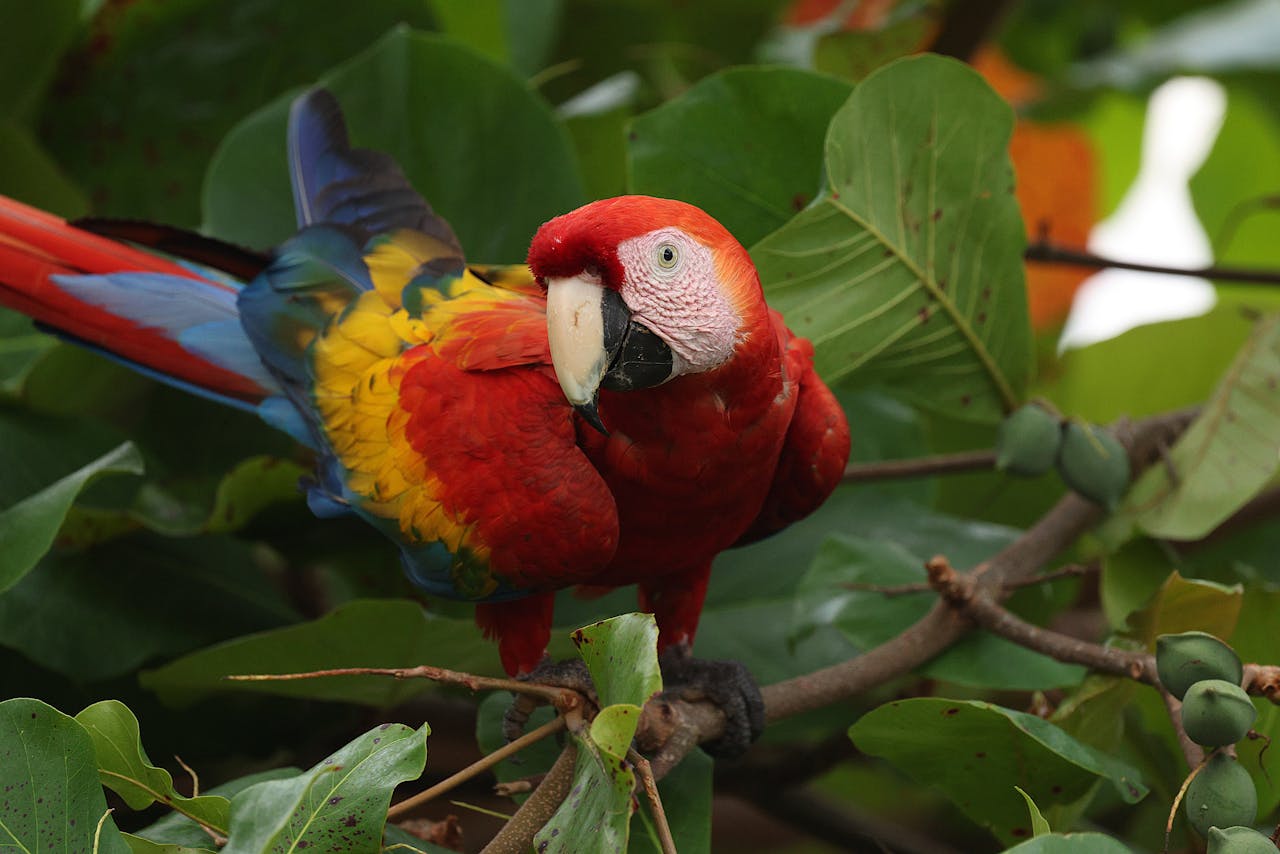
What would you do if someone you loved disappeared… and came back speaking a language you didn’t recognize? That’s not just a metaphor—it actually happened. A parrot named Nigel vanished from his California home for four long years. When he returned, his British accent was gone, replaced by fluent Spanish and a new name given by the family that unknowingly adopted him. At first glance, the story is charming, almost laughable—headline-worthy, sure. But beneath the humor is something far more revealing: a story about transformation, memory, and what it means to be shaped by love in unexpected places. Nigel didn’t just come back. He came back different. And maybe… so have you.
We don’t often talk about it, but many of us have taken our own flights from the familiar. We’ve wandered, drifted, gotten lost—emotionally, spiritually, or even physically. We’ve stepped into lives we didn’t plan for, picked up habits, rhythms, and ways of speaking that weren’t part of who we used to be. And then one day, we return—to a person, a place, or even just to ourselves—and we realize we’ve changed. This article is for those moments. It’s about parrots, yes—but more importantly, it’s about people. About the journeys that shape us, the voices we pick up, and the truth that coming back different doesn’t mean we’re broken. It means we’ve lived.
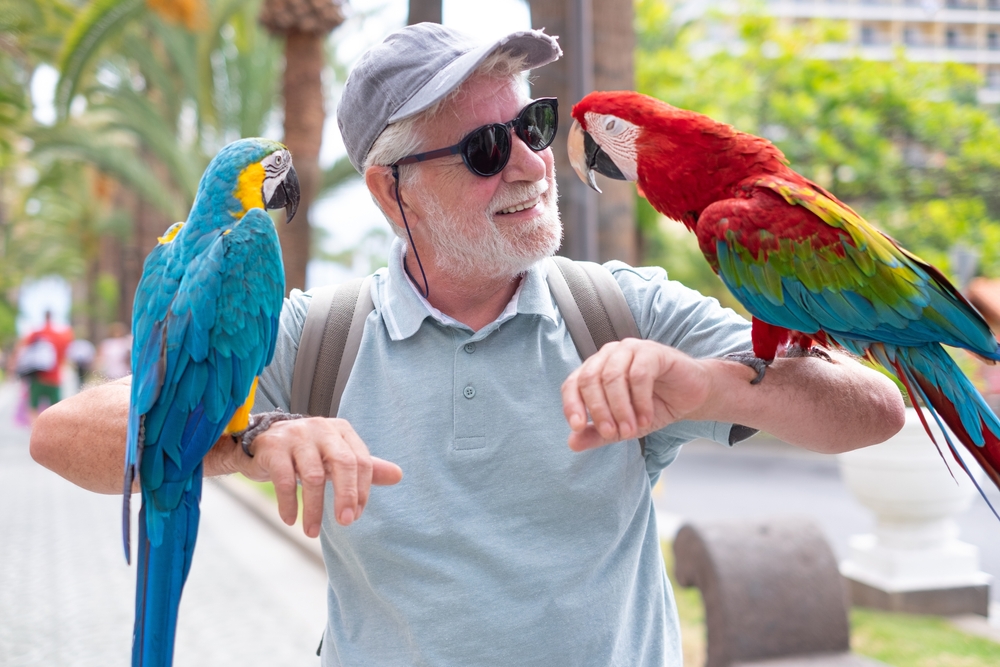
The Remarkable Return – More Than Just a Parrot
When Nigel, an African grey parrot, disappeared from his home in Southern California, his British-accented chatter vanished with him. For his owner, Darren Chick, the loss was personal. Nigel wasn’t just a pet—he was a companion, a part of the household. So when he showed up four years later, miraculously returned thanks to a microchip scan at a vet clinic, Chick was overwhelmed with emotion. But something had changed. Nigel, once fluent in British English, now greeted the world with fluent Spanish phrases like “Buenos días” and “Loro macho.” The bird had returned—but not the same.
In the years he was missing, Nigel had unknowingly taken on a second life. A family in Torrance, California had purchased the parrot—whom they called Morgan—at a garage sale for $400. Over time, he bonded deeply with the family’s Guatemalan-born grandfather, Rubén Hernández. After losing his wife, Hernández found solace in Morgan’s company. The bird didn’t just speak; he sang movie themes, called out the names of their dogs, barked like them, and imitated the sounds of early-morning trash trucks. In a household marked by both grief and resilience, Morgan became more than entertainment—he became emotional support, a daily presence of warmth, laughter, and life.
When Nigel was eventually identified and reunited with Chick, the story could’ve ended with the bird returning to his original owner. But it didn’t. Recognizing the depth of the bond Morgan had formed with the Hernández family, Chick made a rare and selfless choice—he gave the parrot back to the family who had unknowingly rescued him years before. It was an acknowledgment that home isn’t always where you started—it’s where you’re truly loved.
Nigel’s story is more than just a curious tale of a bilingual bird. It’s a reminder that even when we think we’re lost, we might be exactly where we need to be to grow, to heal, or to help someone else do the same. Sometimes, the journey changes us so deeply that we return with a new voice—one that reflects every step we’ve taken, every heart we’ve touched, and every home we’ve found along the way.
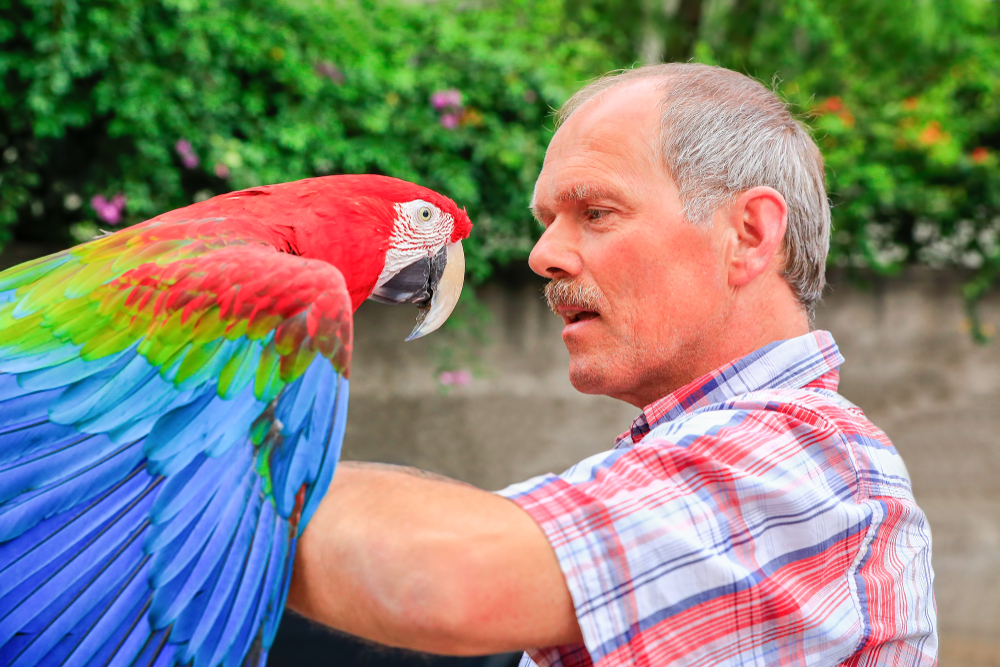
How Parrots Learn to “Talk” – The Science Behind the Squawk
Parrots aren’t just mimics—they’re among the most intelligent and emotionally complex birds on the planet. But to understand why stories like Nigel’s or Charlie’s are even possible, we have to look at how and why parrots can “speak” in the first place. It’s not magic, and it’s not mindless repetition—it’s neuroscience and social learning in action.
Unlike most animals, parrots possess a highly developed brain region called the “song system,” which enables them to mimic not just sounds, but the tone, pitch, and even emotional inflections of human speech. African grey parrots, in particular, are considered one of the most intelligent parrot species. According to Dr. Irene Pepperberg, a pioneering animal cognition researcher, these birds have the communication skills of a five-year-old child and the emotional intelligence of a toddler. In her decades-long work with an African grey named Alex, Pepperberg demonstrated that parrots could understand abstract concepts like “same” and “different,” count objects, and even express frustration or boredom.
But parrots don’t mimic just for fun—they do it for connection. In the wild, vocal learning helps them bond with their flock. In captivity, humans become their flock. So, when Nigel began speaking Spanish, it wasn’t random. He was adapting to the language and soundscape of the people he bonded with—absorbing their words, rhythms, and emotional tones just as he once did with his British owner.
It’s also worth noting that parrots don’t merely copy—they selectively retain the sounds that elicit response or attention. If a parrot learns that barking like a dog makes a human laugh, or that singing a movie theme gets applause, it will keep doing it. In this way, they shape their own “vocabulary” not unlike children do—through repetition, reward, and relationship.
So when a parrot returns after years away, speaking a new language or repeating unfamiliar sounds, it isn’t just a quirky twist—it’s evidence of a living memory. These birds carry the echoes of every room they’ve lived in, every person who’s loved them, and every life they’ve brushed up against. They don’t just repeat—they remember.
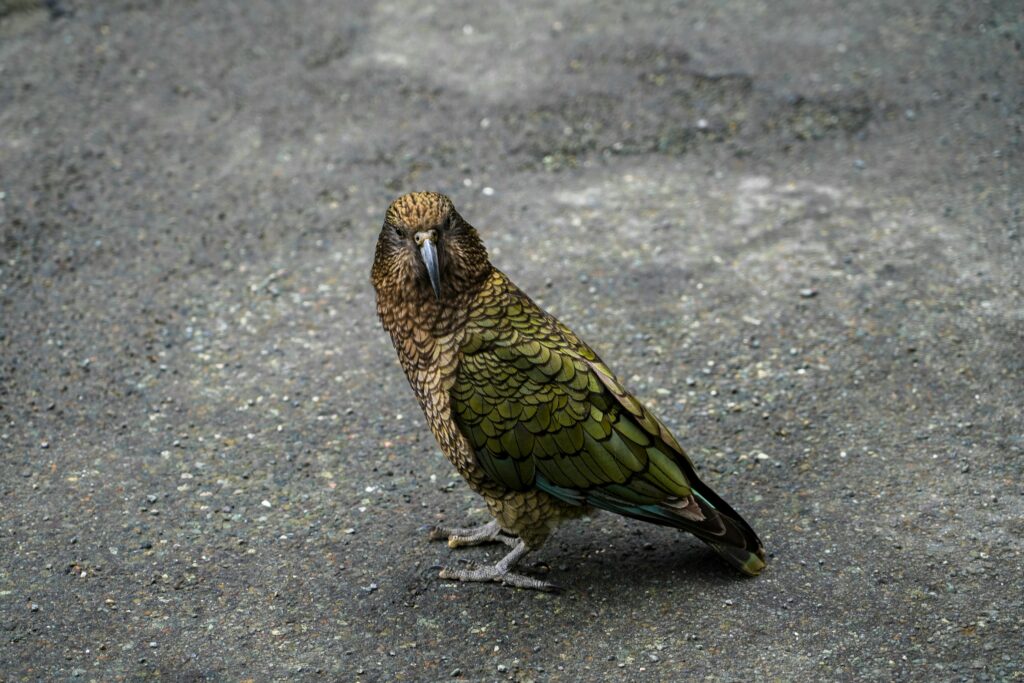
More Than Pets – The Emotional Weight of a Parrot’s Return
For many people, a parrot isn’t just a bird in a cage—it’s family. And when that family member disappears, the loss can leave a void that lingers far beyond the moment they fly away. That’s what made Nigel’s and Charlie’s returns so emotionally powerful—not just because they came back, but because of who they were to the people they left behind.
In the case of Nigel, now known as Morgan, his return came with unexpected heartbreak. When he flew away from the Hernández family after years of being their companion, it wasn’t just a bird lost—it was a deeply personal absence. Rubén Hernández had formed a unique bond with Morgan after losing his wife. The bird had helped fill the silence in their home, mimicking her whistles, learning the names of the family dogs, and becoming a part of the household’s emotional fabric. For Rubén, Morgan was one of the last living connections to the life he had shared with his wife. That kind of companionship can’t be replaced with another pet—it’s earned over time, through shared moments and quiet presence.
A similar sentiment echoed in the bizarre but touching case of Charlie, the parrot from Suffolk who was reunited with his owner, Vera, after four years. Despite the eccentric details of her story, one thing was clear: Charlie had been a source of comfort for Vera in a lonely and difficult life. When he returned—tapping on her kitchen window like a character out of a fable—it sparked laughter, tears, and a flood of memories. The emotional reaction she described, even in humorous terms, reveals something deeply human: sometimes, the return of something—or someone—you thought was lost can reach straight into the heart of your grief and start to mend it.
These stories remind us that the bonds we form with animals can be just as deep, complex, and healing as those we form with people. And when those animals return, they don’t just bring back the past—they bring proof that love, connection, and memory can survive even the longest separations.
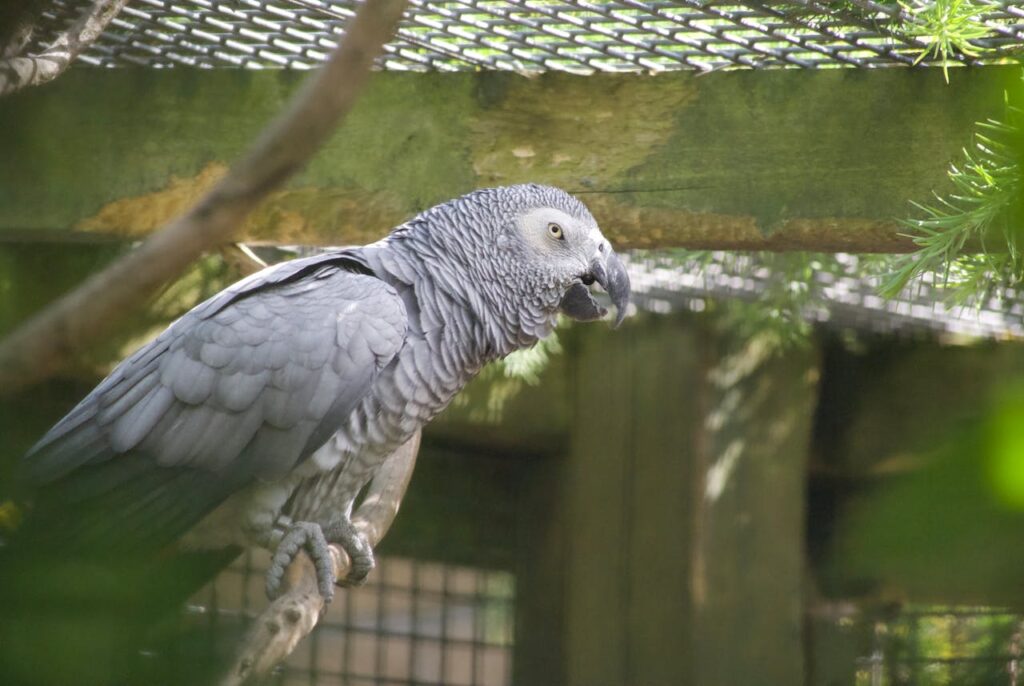
Identity, Change, and the Voices We Pick Up Along the Way
When a parrot returns after years away, speaking a different language, it’s easy to laugh and see it as a quirky headline. But look closer, and it becomes a mirror—one that reflects how all of us are shaped by the environments we pass through, the people we meet, and the love (or loss) we experience along the way. Just like Nigel came back as Morgan, speaking Spanish instead of English, we too change our “voice” over time—sometimes in ways we don’t fully notice until we’re faced with who we once were.
In human terms, we’re constantly adopting new ways of thinking, speaking, and behaving based on the emotional and cultural landscapes we move through. Whether it’s learning a new language, picking up an accent, or absorbing the worldview of the people around us, our identities are always in motion. We are, in many ways, parrots ourselves—mimicking what we hear, testing what sticks, and building an internal vocabulary of experience that defines who we are.
What’s powerful about Nigel’s transformation isn’t just that he learned Spanish—it’s that he adapted completely to a new life. He didn’t cling to the old voice. He made room for the new one. And when he returned, he wasn’t broken or confused—he was whole, just different. This isn’t a story of returning to the “original self,” but of embracing how time away—time lost—can actually deepen and enrich who we become.
And that’s a truth many of us need to hear. Life doesn’t always go according to plan. Sometimes we stray. We lose touch with who we thought we were. But that detour? That side path? It might just be where we find the parts of ourselves we never knew were missing. Like a parrot who flies off into the unknown and comes back with new songs, new sounds, and a fuller sense of self—we, too, can return transformed, not broken.
What We Carry, What We Become
At first glance, Nigel’s return seems like something out of a quirky headline: “Lost British Parrot Comes Back Speaking Spanish.” It grabs attention, maybe makes you smile—but if you pause, if you look deeper, you’ll see that it holds something far more profound. It’s a living metaphor for what happens to all of us when we move through the world. None of us return from life’s detours the same. We absorb our environments, we reflect the people we spend time with, and slowly—sometimes without realizing—we transform. Like Nigel, we pick up new languages. Not always literally, but emotionally. New ways of coping. New ways of loving. New ways of being.
Think of the seasons in your life where you felt lost—times when you were far from who you thought you were supposed to be. Maybe you didn’t recognize your own reflection. Maybe others stopped recognizing you. But that doesn’t mean you were broken. Just like the parrot who found a new home, a new rhythm, and new songs to sing, you were gathering parts of yourself. The pain you endured, the people you encountered, the culture that shaped your voice—all of it left imprints on your identity. We often speak of “finding ourselves,” but the truth is, we create ourselves through the journey. And sometimes, the most authentic parts of who we are emerge not in comfort, but in chaos. Not in stillness, but in flight.
And here’s the call that matters most: embrace that transformation. If you’ve wandered, flown off course, or found yourself speaking a language you didn’t grow up with—don’t apologize for it. Own it. Growth doesn’t always look like progress in a straight line. Sometimes it’s circular. Sometimes it’s a loop that brings you back to the same place with a different heart. And when people don’t understand your new voice—your new self—remember Nigel. Remember that even a parrot can teach us that returning changed doesn’t make you any less worthy of love or belonging. In fact, it may mean you have more to give.
So whether you’re on the journey, just returned, or waiting for someone you love to come back changed—be open. Be present. Be willing to listen, even when the voice sounds different than before. Because in those differences, there’s often a deeper truth. We’re not meant to stay the same. We’re meant to become.
Loading...

